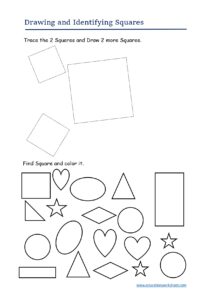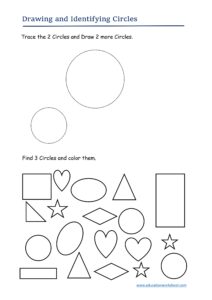Shape recognition and drawing practice
Shape recognition and drawing practice
Shape recognition and drawing practice are essential skills for artists, designers, and anyone looking to develop their artistic abilities. These skills serve as the building blocks of art and design, enabling you to represent objects and scenes accurately. In this comprehensive guide, we will delve deep into the art of shape recognition and drawing practice, providing you with a structured approach to honing your skills.
Understanding the Importance of Shape Recognition
- The Foundation of Art: Recognizing and reproducing shapes accurately is the foundation of visual art. From simple sketches to intricate paintings, shapes form the basis of everything you create.
- Training Your Eye: Developing your ability to identify shapes in the world around you is crucial for improving your artistic vision. This skill will enable you to break down complex subjects into manageable components.
Essential Tools and Materials
- Gathering Supplies: Start by collecting the necessary materials, including sketchbooks, a range of pencils (from 2H for light lines to 6B for dark lines), erasers, and a comfortable workspace with good lighting.
- Optional: Reference Materials: You may want to have objects or images on hand to use as references when practicing shape recognition and drawing.
Basic Shape Recognition Exercises
- Geometric Shapes: Begin with the most fundamental shapes: circles, squares, rectangles, triangles, and ovals. Practice drawing these shapes freehand, focusing on achieving clean lines and accurate proportions.
- Still Life Observation: Arrange everyday objects in a still life composition. Pay attention to how the objects can be broken down into basic shapes. Sketch the arrangement, emphasizing the shapes you observe

Shape recognition and drawing practice
Developing Observation Skills
- Contour Drawing: Start to observe objects closely and practice contour drawing. This involves drawing the outlines or contours of objects without shading or adding details. This exercise trains your eye to recognize shapes accurately.
- Negative Space: Explore negative space drawing, where you focus on the spaces around objects. This technique can help you see shapes as abstract forms and improve your spatial awareness.
Progressive Skill Building
- Complex Shapes: Move on to more complex shapes and objects. Try drawing everyday items such as a bicycle, a tree, or a piece of fruit. Break down these objects into their constituent shapes.
- Dimension and Perspective: Study how shapes change as objects move in space. Learn the basics of perspective drawing to represent three-dimensional objects accurately.
Experimentation and Creativity
- Creative Interpretation: Apply your shape recognition skills to creative projects. Use shapes as building blocks to create abstract or imaginative compositions.
- Mix Media: Experiment with different drawing techniques, such as cross-hatching, stippling, or using charcoal. These techniques can add texture and depth to your drawings.
Continuous Improvement
- Seek Feedback: Share your work with peers, mentors, or online art communities to receive constructive feedback and tips for improvement.
- Daily Practice: Consistency is key to mastery. Dedicate time each day or week to practice your shape recognition and drawing skills.
Conclusion: Shape recognition and drawing practice are fundamental skills that empower artists and designers to express themselves visually. With patience, practice, and a keen eye for shapes in the world around you, you can make significant progress in your artistic journey. Remember that art is a continuous learning process, so keep exploring, experimenting, and refining your skills to unlock your creative potential.
By following this comprehensive guide and putting in the effort, you’ll find yourself becoming more proficient in shape recognition and drawing, opening up new artistic possibilities and opportunities for self-expression.

Shape recognition and drawing practice
Understanding the Significance of Shape Recognition
- The Basis of Visual Communication: Shape recognition is the language of visual communication. It enables artists to convey ideas, emotions, and perspectives through lines and forms.
- Training Your Perception: Developing your ability to recognize and analyze shapes is critical for improving your artistic vision. This skill allows you to deconstruct complex subjects into simpler elements for more accurate representation.
Assembling Your Toolkit
- Gathering Materials: Begin by collecting the necessary materials, including high-quality sketchbooks, a variety of drawing pencils (ranging from hard to soft leads), erasers, sharpeners, and a well-lit workspace free from distractions.
- Reference Materials: Depending on your preference, you may want to have objects, photographs, or art books as references when practicing shape recognition and drawing.
Foundational Shape Recognition Exercises
- Geometric Shapes: Commence with the most basic shapes: circles, squares, triangles, rectangles, and ovals. Practice drawing these shapes freehand, focusing on achieving precise lines and consistent proportions.
- Still Life Exploration: Arrange everyday objects in a still life composition. Pay close attention to how these objects can be dissected into fundamental shapes. Sketch the arrangement, emphasizing the shapes you observe.


